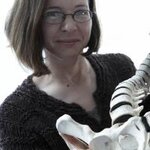Applied Physics

While the human species is unquestionably a member of the Primate group, the identity of the next closest group to primates within the entire class of living mammals has been hotly debated. Now, new molecular and genomic data gathered by a team including Webb Miller, a professor of biology and computer science and engineering at the Penn State University, has shown that the colugos -- nicknamed the flying lemurs -- is the closest group to the primates. The team was led by William J. Murphy, associate professor in the Department of Veterinary Integrative Biosciences at Texas A & M…

A University of Florida scientist has grown a living "brain" that can fly a simulated plane, giving scientists a novel way to observe how brain cells function as a network.
The "brain" -- a collection of 25,000 living neurons, or nerve cells, taken from a rat's brain and cultured inside a glass dish -- gives scientists a unique real-time window into the brain at the cellular level.
By watching the brain cells interact, scientists hope to understand what causes neural disorders such as epilepsy and to determine noninvasive ways to intervene. As living computers, they may someday be used to…

A fuel cell converts chemically stored energy directly into electricity and is already more efficient in converting fuel to power than the internal combustion engine usually found in automobiles. However, the cost for the catalysts alone make fuel-cell vehicles out of reach of most consumers and therefore impractical for manufacturers.
If the efficiency were to get higher, the cost would come down substantially. In addition, if an auto fuel cell ran on hydrogen and air, there would be no combustion, no noise and no vibration - and the only by-product would be water. All good things.
With…

You can call it optical tweezers, microtools for chips, or even a cellular Death Star. MIT researchers have found a way to use a “tractor beam” of light to pick up, hold, and move around individual cells and other objects on the surface of a microchip.
The idea of using light beams as tweezers to manipulate cells and tiny objects has been around for at least 30 years. But the MIT researchers have found a way to combine this powerful tool for moving, controlling and measuring objects with the highly versatile world of microchip design and manufacturing.
Optical tweezers, as the technology is…

Biological cements to repair ‘burst fractures’ of the spine are being developed and tested in a major new collaborative project between the University of Leeds and Queen’s University Belfast.
Bone cements, similar to those used in joint replacement surgery, are already being used to strengthen damaged vertebrae of patients with diseases such as osteoporosis, in a procedure known as vertebroplasty, but ‘burst fractures’ to the spine, injuries often sustained in major impact accidents and falls, are much more difficult to treat. They account for over 1,000 emergency NHS admissions each year…

The greatest mass extinction in Earth’s history also may have been one of the slowest, according to a study that casts further doubt on the extinction-by-meteor theory.
Creeping environmental stress fueled by volcanic eruptions and global warming was the likely cause of the Great Dying 250 million years ago, said USC doctoral student Catherine Powers.
Writing in the November issue of the journal Geology, Powers and her adviser David Bottjer, professor of earth sciences at USC, describe a slow decline in the diversity of some common marine organisms.
The decline began millions of years before…

For the first time, researchers at the University of Pennsylvania are able to pinpoint brain waves that distinguish true from false memories, providing a better understanding of how memory works and creating a new strategy to help epilepsy patients retain cognitive function.
The study, the first to show that brain waves predict the veracity of human memories, is available online in the journal Psychological Science and in the November 2007 print edition.
To test whether distinct patterns of electrophysiological activity prior to a response can distinguish true from false memories,…

In a landmark test flight, the National Center for Atmospheric Research (NCAR) and a team of research partners this month successfully launched a solar telescope to an altitude of 120,000 feet, borne by a balloon larger than a Boeing 747 jumbo jet. The test clears the way for long-duration polar balloon flights beginning in 2009 that will capture unprecedented details of the Sun's surface.
"This unique research project will enable us to view features of the Sun that we've never seen before," says Michael Knölker, director of NCAR's High Altitude Observatory and a principal investigator on the…

Scientists have obtained core samples from deep inside California's San Andreas Fault for the first time, a finding that may lead to a better understanding of the underground molecular events associated with earthquakes, according to an article in the Oct. 22 issue of Chemical&Engineering News.
The 800-mile-long fault that bisects California is infamous as the source of the region's most devastating earthquakes. Conventional sampling of the fault yields slurries of rock chips that are fragmented and difficult to study.
In the article, C&EN senior editor Elizabeth K. Wilson describes…

A study published by Nutrition Journal says they can demonstrate substantial advances in long term weight management and blood glucose levels as a result of personalizing patients' diets based on their genetic information (nutrigenetics). They found significant improvement in long term (more than 300 days) weight management for individuals whose nutrient requirements were tailored to individual variations in the genes known to affect nutrient metabolism and transport.
The 3 year study examined 93 individuals with a history of weight loss failures. In an effort to answer…